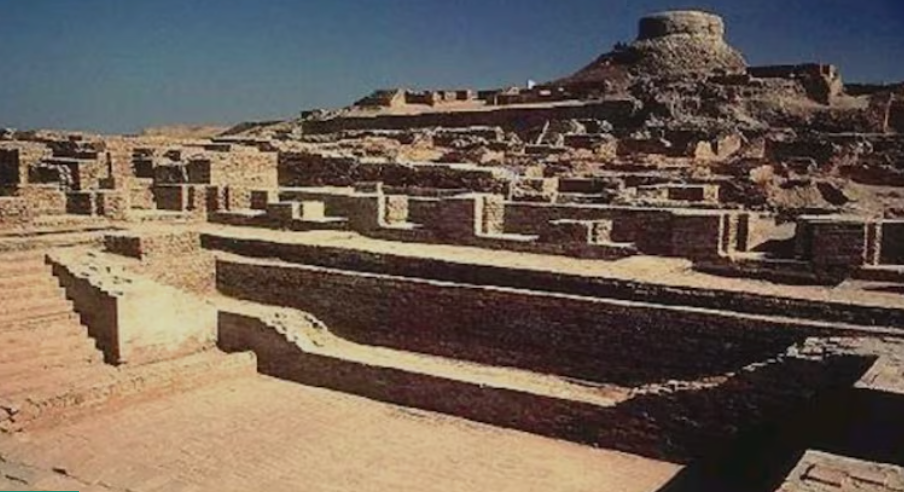Centenary of the Discovery of the Indus Valley Civilization (GS Paper 1, History)

Context
- On September 20, 2024, we celebrate a significant milestone—the centenary of the announcement of the discovery of the Indus Valley Civilization, also known as the Harappan Civilization.
- This ancient civilization, along with those of Egypt and Mesopotamia, is recognized as one of the earliest urban societies in the world, demonstrating remarkable advancements in technology, trade, and urban planning.
Overview of the Harappan Civilization
- The Harappan Civilization developed along the banks of the Indus River, covering parts of present-day India, Pakistan, and Afghanistan.
- This Bronze Age civilization is characterized by its sophisticated urban centers, advanced agricultural practices, and extensive trade networks.
- Artifacts made from copper-based alloys and other materials have been unearthed at numerous archaeological sites, providing a glimpse into the lives of its inhabitants.
Historical Excavations
- Early Excavations: The journey began in 1921-22 when Daya Ram Sahni excavated Harappa in Punjab, Pakistan. This marked the first significant discovery of a city associated with an ancient civilization in South Asia. In 1922, Rakhal Das Banerji began work at Mohenjo-daro, unveiling another major urban center. These excavations opened a new chapter in understanding early human societies in the Indian subcontinent.
Chronological Phases of the Civilization
The Harappan Civilization can be divided into three distinct chronological phases:
- Early Phase (3200 BCE to 2600 BCE): This period marks the initial development of urban centers and the establishment of trade networks.
- Mature Period (2600 BCE to 1900 BCE): The civilization reached its zenith during this phase, characterized by advanced urban planning, architecture, and craftsmanship.
- Late Phase (1900 BCE to 1500 BCE): This period witnesses a gradual decline, with evidence of urban decay and a shift in settlement patterns, leading to the eventual collapse of the civilization.
Geographic Spread
The Harappan Civilization spanned approximately 1.5 million square kilometers and is notable for its wide distribution across South Asia. There are around 2,000 identified sites, with significant concentrations in:
- India: Approximately 1,500 sites, including regions like Gujarat, Haryana, Jammu and Kashmir, Maharashtra, Rajasthan, and Uttar Pradesh.
- Pakistan: About 500 sites, including key locations like Mohenjo-daro and Harappa.
- Afghanistan: A few sites contribute to the broader understanding of the civilization's reach.
Major Harappan Sites
Some of the most significant sites include:
- Harappa: Located in Punjab, Pakistan, known for its extensive urban planning and architecture.
- Mohenjo-daro: Situated in Sindh, Pakistan, famous for its advanced drainage systems and public baths.
- Dholavira: Located in Gujarat, India, notable for its water conservation systems and sophisticated town planning.
- Rakhigarhi: In Haryana, India, one of the largest Harappan sites with extensive archaeological significance.
- Lothal: A crucial port city in Gujarat that highlights the civilization's maritime trade links.
Significance of the Discovery
- The discovery of the Harappan Civilization transformed historical narratives about early human settlements in South Asia.
- Prior to this, historians believed settled life began only around the sixth century BCE, leaving a considerable gap in understanding the region's history.
- The identification of the Harappan Civilization filled this gap and underscored its importance as one of the first complex urban societies.
- It also revealed the civilization's maritime contacts with West Asia as early as 3000 BCE, highlighting its role in global trade networks.
Major Features of the Harappan Civilization
Urban Planning:
- The Harappans exhibited remarkable urban planning skills, with cities designed in a grid pattern.
- Streets were wide and lined with well-constructed brick houses featuring multiple rooms, kitchens, and bathrooms.
- Public amenities included drainage systems that facilitated waste management, demonstrating a high level of civic planning.
Craftsmanship and Trade:
- The civilization had a thriving economy supported by extensive trade networks.
- Harappan merchants traded with regions as far as Mesopotamia, Afghanistan, and the Arabian Peninsula.
- Artisans produced exquisite pottery, jewelry, and seals, showcasing advanced craftsmanship in materials such as terracotta, steatite, and semi-precious stones.
Ornamentation:
- Harappan society placed a strong emphasis on personal adornment, with individuals wearing intricate jewelry made from gold, silver, ivory, and semi-precious stones.
- These ornaments reflect not only the artisanship of the time but also social status and cultural practices.
Agriculture:
- Agriculture was a cornerstone of the Harappan economy, with evidence of cultivated crops such as wheat, barley, peas, and cotton.
- The civilization developed sophisticated irrigation systems, which supported agricultural productivity in the fertile plains of the Indus River.
Social Organization:
- The Harappan society appears to have been stratified, with evidence suggesting a hierarchical structure.
- Differences in housing sizes and the presence of public buildings indicate social differentiation, with leaders likely playing significant roles in governance and trade.
Religious Practices:
- Artifacts suggest that the Harappans had a complex belief system.
- Symbols and motifs found on seals and pottery imply the existence of religious rituals, possibly involving animal worship.
- The discovery of figures such as the "Priest King" highlights the importance of spiritual leadership.
Decline and Disappearance:
- The reasons behind the decline of the Harappan Civilization are still a subject of debate.
- Theories include ecological changes, such as shifts in river courses that may have disrupted agriculture, as well as possible invasions and internal conflicts.
- These factors contributed to the gradual abandonment of major urban centers.
Conclusion
- The past century of research into the Harappan Civilization has not only captivated historians and archaeologists but has also inspired experts across various fields, including urban planning, metallurgy, and social anthropology.
- The civilization remains a subject of intrigue due to its sophisticated urban infrastructure, advanced technological innovations, and rich cultural heritage.
- As scholars continue to unravel its mysteries, the Harappan Civilization offers invaluable insights into the foundations of urban society and the complexity of human interactions in ancient times.
- Its legacy endures as a testament to human ingenuity and adaptability, influencing contemporary understandings of civilization and culture.


